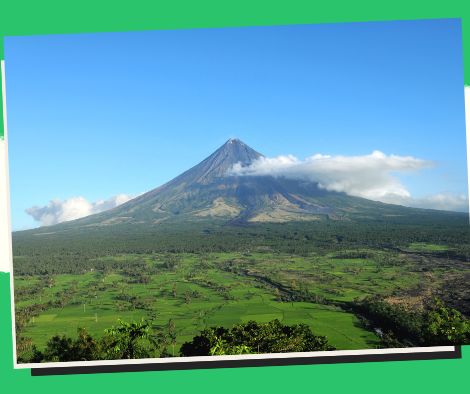
Mayon Volcano’s seismic activity has increased.
Since June 24, the Mayon Volcano has experienced an increase in shallow volcanic earthquakes, according to a warning from the Philippine Institute of Volcanology and Seismology (Phivolcs).
According to the report, 102 volcanic earthquakes were recorded over 24 hours between June 25 and June 26, 2023, which noted that a rise in mild and shallow volcanic earthquakes started on June 24 and continued progressively.
Between 5 a.m. and 3 p.m. on Monday, 100 volcanic earthquakes, according to Phivolcs, were also noted. In contrast to tectonic earthquakes, which are brought on by fault movement, volcanic earthquakes are brought on by the movement or eruption of magma from the volcano.
Due to a constant rise in rockfall occurrences, Mayon Volcano has been on alert Level 3 (increasing inclination towards hazardous eruption). According to Phivolcs, the summit crater’s degassed lava has erupted in weak aseismic effusions since then.
According to Phivolcs officer in charge Teresito Bacolcol, “this indicates that gas-less lava is gradually and subtly pouring out of the volcano’s summit.”
The alert stated that some earthquakes that could be located and analyzed came from the summit lava dome, indicating that they originated from lava extrusion activities at the crater.
This indicates that the more recent earthquakes were predicted or placed in the crater where the dome is found, according to Bacolcol.
This would imply that lava was being forced out of the lava dome, which would explain why there have been recent earthquakes, he added.
Increasing seismicity was accompanied, according to Phivolcs, by “a noticeable sharp jump in ground tilt on the southwest sector of the edifice that began on June 25, 2023.”
The summit crater’s constant lava effusion, intermittent rockfall generation, and pyroclastic density currents, or PDCs, are still extant at this time.
Phivolcs, on the other hand, stressed that villages within the seven and eight-kilometer radius must always be ready. That area inside the permanent danger zone of six kilometers must remain evacuated.
Ashes from eruptions can be dangerous to planes. Therefore aviation authorities must notify pilots to avoid flying close to the volcano’s summit, according to Phivolcs.
Save/Share this story with QR CODE
Disclaimer
This article is for informational purposes only and does not constitute endorsement of any specific technologies or methodologies and financial advice or endorsement of any specific products or services.
 Need to get in touch?
Need to get in touch?

We appreciate your reading. 
1.) 

Your DONATION will be used to fund and maintain NEXTGENDAY.com
Subscribers in the Philippines can make donations to mobile number 0917 906 3081, thru GCash.
3.) 
4.) 
AFFILIATE PARTNERS

World Class Nutritional Supplements - Buy Highest Quality Products, Purest Most Healthy Ingredients, Direct to your Door! Up to 90% OFF.
Join LiveGood Today - A company created to satisfy the world's most demanding leaders and entrepreneurs, with the best compensation plan today.

 Business, Finance & Technology
Business, Finance & Technology

 Business Technology, Finance Technology & Information Technology
Business Technology, Finance Technology & Information Technology





